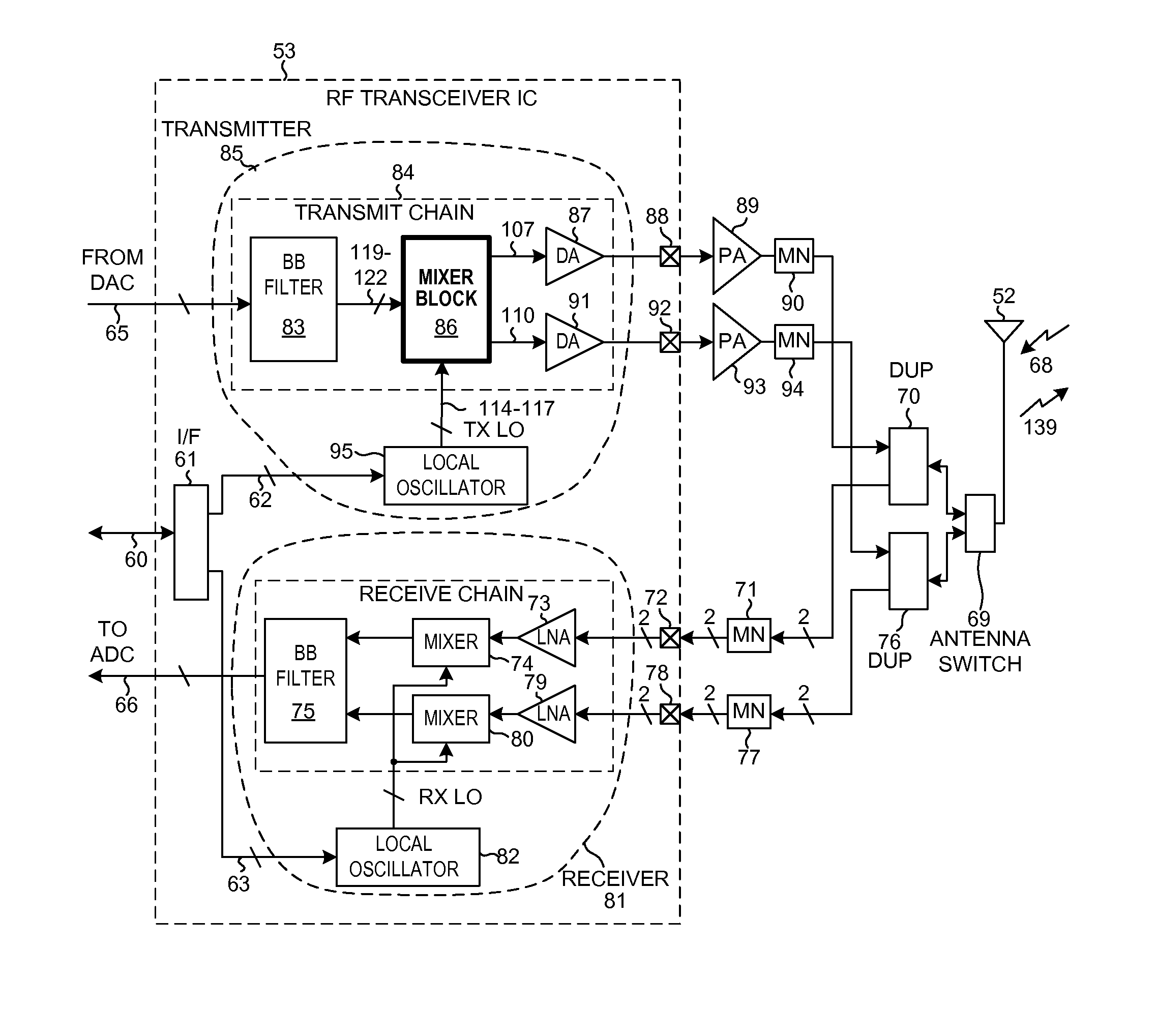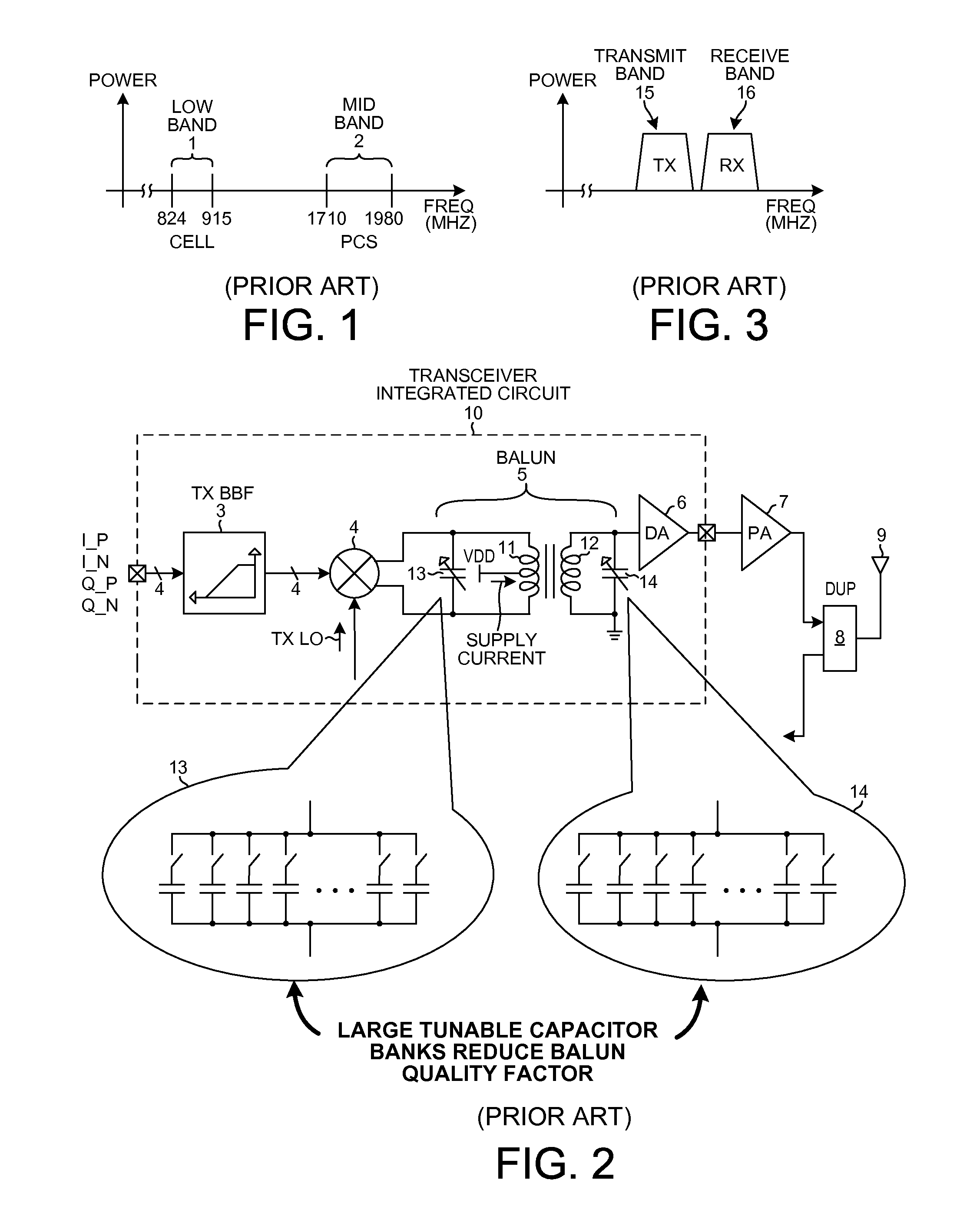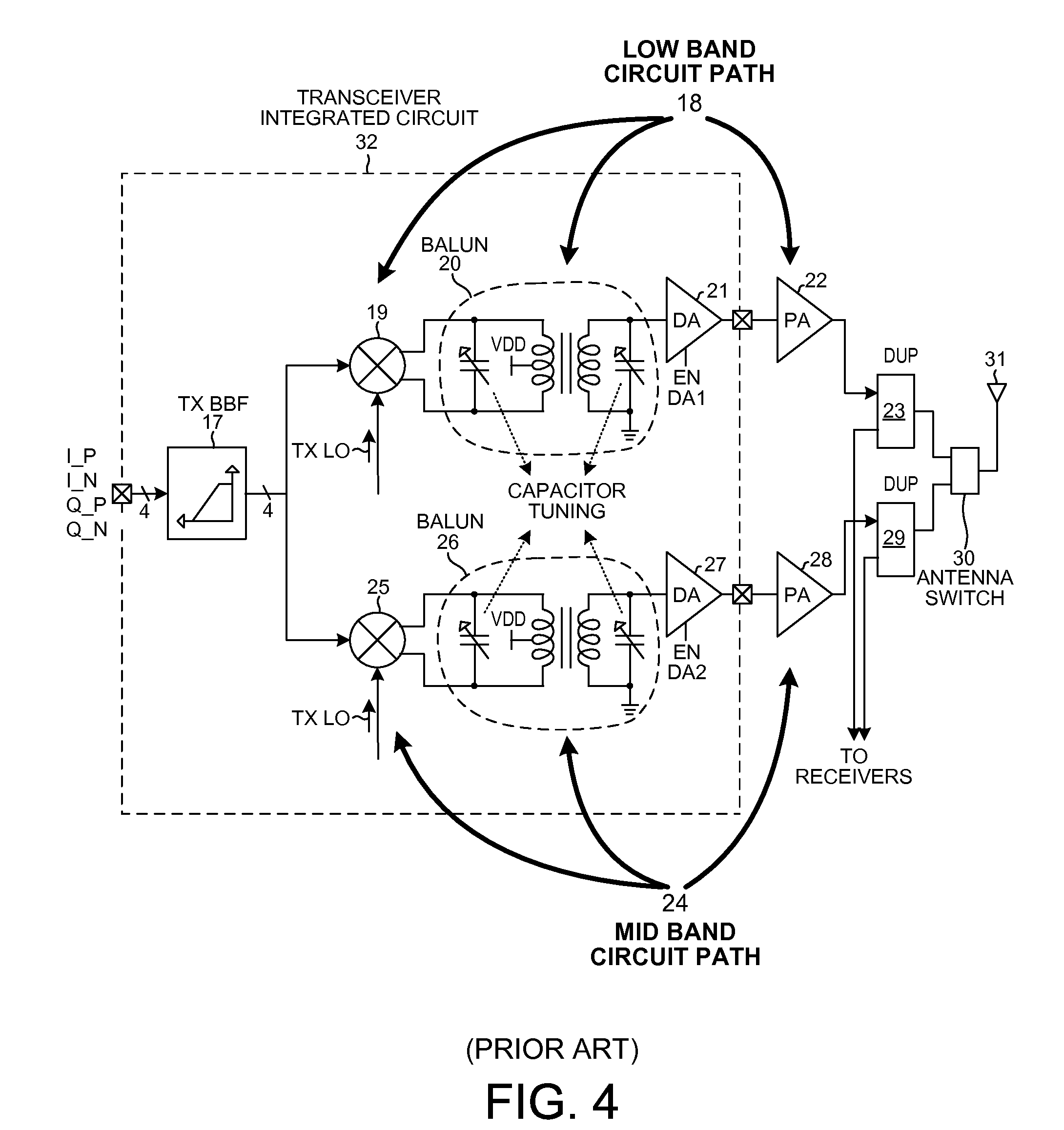Wideband balun having a single primary and multiple secondaries
a wideband balun and primary technology, applied in the field of wideband transmitters, can solve the problems of undetectable two-path transmitter circuit of fig. 4 as implemented, reduce the quality factor (q) of the balun, and reduce the power consumption
- Summary
- Abstract
- Description
- Claims
- Application Information
AI Technical Summary
Benefits of technology
Problems solved by technology
Method used
Image
Examples
Embodiment Construction
[0027]FIG. 5 is a diagram of a mobile communication device 51 that includes a mixer / balun circuit in accordance with one novel aspect. In this example, mobile communication device 51 is a multi-band cellular telephone handset. Device 51 includes (among other parts not illustrated) an antenna 52 usable for receiving and transmitting cellular telephone communications, an RF (Radio Frequency) transceiver integrated circuit 53, and a digital baseband processor integrated circuit 54. In some examples, the transceiver circuitry and the digital baseband circuitry are implemented on the same integrated circuit, but a two integrated circuit implementation is set forth here for illustration purposes.
[0028]Digital baseband integrated circuit 54 includes a processor 55 that executes a program 56 of processor-executable instructions. Program 56 is stored in a processor-readable medium 57 that in this case is a semiconductor memory. Processor 55 accesses memory 57 via local bus 58. Processor 55 i...
PUM
 Login to View More
Login to View More Abstract
Description
Claims
Application Information
 Login to View More
Login to View More - R&D
- Intellectual Property
- Life Sciences
- Materials
- Tech Scout
- Unparalleled Data Quality
- Higher Quality Content
- 60% Fewer Hallucinations
Browse by: Latest US Patents, China's latest patents, Technical Efficacy Thesaurus, Application Domain, Technology Topic, Popular Technical Reports.
© 2025 PatSnap. All rights reserved.Legal|Privacy policy|Modern Slavery Act Transparency Statement|Sitemap|About US| Contact US: help@patsnap.com



